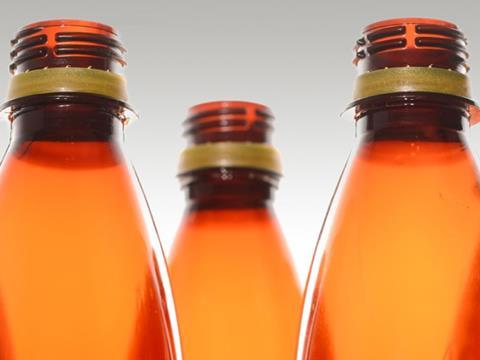
The use of polyethylene terephthalate (PET) for packaging has seen tremendous growth due to the material’s ability to offer light weighting options, unique container designs, clarity, long shelf life and recyclability. But unfortunately, only non-coloured and lightly-tinted blue PET bottles offer reclaimers a high value in today’s recycle market.
According to a recent report by Plastic Technologies, Inc., (PTI) an opportunity to create a market for non-colored problematic PET bottles may be available that does not exist today. However, rigorous performance testing would need to be done to understand how the incorporation of these PET bottles might impact an amber recycle stream.
“The goal is to find a way to allow clear, but problematic bottles, that yellow when recycled to benefit an amber recycling stream. It’s possible that yellowing can be offset by blending them with amber colored bottles to yield an acceptable amber colour for reuse,” said Frank Schloss, Ph.D., Plastic Technologies, Inc.
While end-use markets exist for high-quality, uncoloured PET bottles, the same cannot be said for most colored alternatives. However, if the relatively low volume of PET used for amber carbonated soft drink, beer and pharmaceutical PET packaging usage increases, items returned for recycling may reach a level significant enough to warrant their own stream. Additionally, brand owners would be under pressure to demonstrate that these packages can be sustainably reused in the production of new amber recycle-content bottles.
The use of PET to produce bottles and containers for oxygen sensitive products as well as carbonated beverages is limited to some degree by its barrier properties. These limitations can be overcome through the use of oxygen scavengers, multilayer structures and plasma coatings. But unfortunately, other than some plasma coating options, these barrier solutions also present recycling difficulties. The oxygen scavenger and multilayer barrier bottles present PET reclaimers with issues that cause the rPET materials to yellow after melt reprocessing.
As a result, many brand owners who want to support sustainability initiatives by producing truly recyclable bottles have shied away from some technical developments that could give them additional right-weighting or longer shelf lives. They realize that these technologies would present problems to the PET reclaimers and, in turn, harm the very type of rPET they wish to buy for their own reuse. For more information on the report visit this page.
“Now is the time to begin addressing this issue. The goal is to how best to handle an amber coloured bottle stream, and other problematic PET bottles, so that value can be added to the recycling stream in the future,” Schloss said.
More info:














